Business Agility
NEW! Going Fast!
Currently in 15 Carts
Available in 9 Styles
Price: Priceless
Shop AgilityMost Recent
Most Recent
Most Recent

Leveraging immersive technologies has emerged as a game-changing strategy to forge strong omnichannel connections and ensure consistent customer experiences. Technology has shaped customer expectations, and the fusion of headless commerce, immersive experiences, AI/ML-driven personalization, and AR/VR innovations mark the path toward a future where customers don't just shop – they immerse themselves in a world of products, stories, and possibilities.
“With 60% of digital orders influenced by the store, your in-store digital experience has never been more important.”
-Salesforce

The lines between digital and physical shopping are blurring, creating a seamless connected experience. This shift is making consumer journeys more intricate, while their demands for convenience and options are reaching new heights.

Image source: Ikea
Leveraging AR can truly elevate the shopping journey by giving customers the power to envision products right in their living spaces. AR doesn't just offer convenience; it's a ticket to hyper-personalization, turning the familiar in-store and online merchandising into a cozy home experience. Just look at Ikea's Kreativ – it's the ultimate proof of how AR can work magic in reshaping the retail landscape.
“Visitors were 65% more likely to place an order after interacting with a product in AR”
-Shopify
The commerce landscape is evolving, and virtual try-on is leading the charge. With the integration of interactive smart mirrors, customers can immerse themselves in a world of virtual product trials. These mirrors go a step further by utilizing artificial intelligence and machine learning technology to suggest products tailored to individual preferences and coupon matching, seamlessly merging in-store and at-home experiences; the trend continues with mobile checkout via an app, letting shoppers purchase the products they try on, anytime, anywhere. This marks the rise of a true omnichannel retail journey, where convenience meets personalization for an unparalleled shopping adventure.
Once customers have their ideal products in sight, retailers can take steps to elevate the customer journey even further utilizing headless commerce and AI. Harnessing Chat GPT technology to provide personalized services, retailers can seamlessly enhance app utilization, and UX, and improve self-service convenience.
Utilizing headless commerce, retailers can enable faster innovation while easily scaling application features. Whether in-store or out, the app becomes a reliable companion, offering quick price checks, access to discounts, and mobile POS/checkout. Moreover, customers can now use chat GPT and ML-powered chatbots for in-store guidance and answers.
Using the data gathered from app usage and AI/ML technology to analyze the data, retailers can then use text-based marketing, promotions, and incentives to entice customers back to the app. It's the next dimension of retail, putting personalized assistance at every step.
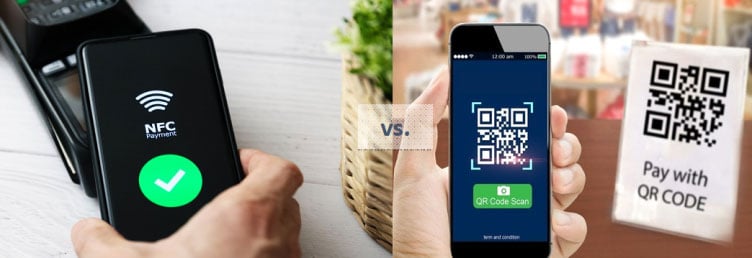
Image source: LinkedIn
Retailers can seamlessly enhance the checkout experience by leveraging near-field communication (NFC) tags, allowing customers to effortlessly complete purchases with a simple tap of their devices. Moreover, the integration of NFC tags into products and store environments can bridge the gap between online and in-store experiences, enabling customers to access immersive digital content, product information, and personalized recommendations, thus crafting a seamless and engaging shopping journey.
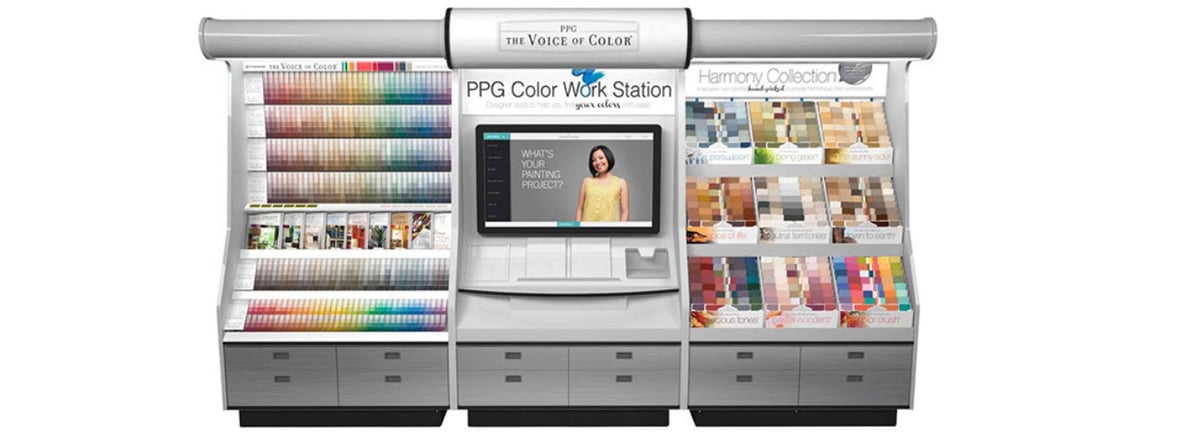
Image source: Shiver Lumber Company
Take in-store CX to the next level by crafting immersive customer experiences through the incorporation of video storytelling. Through captivating videos, customers can gain insights into item transparency and production processes, fostering trust and engagement. Technologies such as interactive screens, augmented reality displays, and QR codes can be employed to seamlessly integrate these videos, delivering a dynamic and informative encounter that resonates with modern shoppers.
PPG stands out as an exemplary retailer that weaves captivating narratives into its customer experiences, as demonstrated by its innovative integration of video storytelling. An exciting instance of this is seen in their "Voices of Color" campaign, where they incorporated touchscreens into their paint chip display. This approach adds an immersive layer to their customer engagement, allowing you to dive into the world of colors with a simple touch.

Image source: Fast Company
Retailers can elevate customer experiences by curating in-store environments with captivating photo opportunities and sensory interactions. This approach resonates particularly well with younger audiences, enticing them to engage and share their experiences on social platforms. By strategically integrating visually appealing backdrops, interactive installations, and multisensory elements, retailers can effectively tap into the power of social engagement, influencers, and word-of-mouth marketing to create a buzz around their brand.
Huda exemplifies a retailer that crafts immersive customer experiences through the strategic utilization of photo opportunities.
Amid the dynamic shifts in the retail industry, development teams face a distinctive hurdle: achieving business objectives while operating with leaner teams and restricted budgets. Navigating this challenge demands a delicate equilibrium between efficiency and impactful results. Agile methodologies and business agility have proved to be instrumental, allowing retailers to achieve more with less. This shift toward a more streamlined approach is pushing the envelope on automation and machine learning utilization, driving ROI without compromising innovation.
Image source: Canva
Strategic resource optimization holds the answer to staying competitive in the league of retail giants such as Amazon. Achieving this level of efficiency relies on the deliberate integration of machine learning, process automation, and selective outsourcing of development work to reputable firms known for their reliable delivery.
In 2022, retail e-commerce sales exceed 5.7 trillion U.S. dollars worldwide, emphasizing the importance of application reliability for sales revenue.
For instance, in software development, automated testing expedites the identification of defects and ensures the reliability of applications. By automating repetitive tasks, businesses can allocate resources more strategically, minimize errors, accelerate their overall workflow, finish development projects faster, and improve time-to-market.
A pivotal element in a successful transformation strategy involves translating these concepts into reality by leveraging technology. A strong concept lacking effective implementation will ultimately yield limited results. Large enterprises (revenues over $1 billion) are increasingly outsourcing their digital initiatives, improving efficiency and internal resource utilization.
Image source: Statista
Embracing Agile methodologies and fostering business agility stands as another pivotal strategy for enhancing business efficiency and maximizing ROI. In today's rapidly evolving retail landscape, the ability to swiftly adapt to changing market dynamics is paramount. Agile methodologies empower teams to streamline workflows, minimize bottlenecks to improve time-to-market, and swiftly respond to customer needs. By embracing flexibility and iterative processes, businesses can efficiently prioritize tasks, allocate resources, and deliver value-driven solutions that boost ROI.
Implementation of a successful Agile transformation requires an Agile Transformation Framework; which can help your business shift its mindset and culture to operate with greater agility empowering organizations to achieve more with less by optimizing processes, resources, and strategies in the following ways:
Image source: McKinsey
Curious about how your organization fares in terms of business agility? Take our Business Agility Assessment today and chart your path towards unparalleled efficiency and success.
Harnessing the power of AI and ML has become the cornerstone of modern retail operations. Forward-thinking retailers are employing these technologies to transform workflows, boost productivity, and improve operational efficiency.
Machine learning operates through self-enhancing computer algorithms designed to analyze data, identify patterns and deviations, and acquire insights into how these connections impact industry trends or business decisions.
Success stories from major retailers utilizing AI and ML underscore the potential; some of the retailers that utilize these innovative technologies include:
Once clear patterns and opportunities are identified using AI and machine learning, it’s important to have the capabilities for real-time access to the data captured in order to make data-driven decisions.
Photo source: Canva
In the ever-evolving landscape of retail, the importance of data quality cannot be overstated. It's not just about having data; it's about having the right data at the right time to make informed decisions. To thrive, businesses must possess a comprehensive understanding of what's effective and what's not, and have the ability to quickly identify opportunities. A vital aspect of this process is the seamless data aggregation across various initiatives, and having the ability to obtain real-time data insights. In this data-driven era, the capability to harness better data translates directly to the agility and competitiveness of a business.
As your company grows and acquires more customer data, managing that data becomes increasingly difficult. Utilizing a global data hub can help your company collect, organize, and analyze information that can be used to make better business decisions.
Embracing cloud modernization for infrastructure and transitioning database operations to the cloud heralds a new era of efficiency and agility for businesses. The advantages are multifaceted:
In the pursuit of market supremacy, companies are turning to hyper-personalization as a strategy to improve both customer acquisition and retention. The competitive landscape demands innovative ways to amplify market share, elevate in-store and online sales, and secure business opportunities ahead of the competition. By prioritizing hyper-personalization and putting the customer’s needs and experience at the forefront of business objectives, companies are poised to enhance conversion rates, foster enduring customer relationships, and proactively seize new avenues for growth.
“Consumers are expecting personalized experiences; they expect that Sephora knows who they are and not just that they recognize them when they are online, but wherever they are interacting with Sephora.”
Integrating machine learning and generative AI technology into existing workflows heralds a dual transformation: bolstering personalization on the customer front while streamlining back-end operations to curtail costs. By leveraging these advanced technologies, businesses can tailor experiences with unprecedented precision, fostering deeper customer engagement. Using this hyper-personalized approach, retailers can utilize text-based marketing, promos, and incentives to entice customers to visit their site or app.
-Stackla report
Predicting customer intent based on user behavior is key to creating customer-centric search results in real-time according to the visitor's relevance. This dynamic approach, driven by artificial intelligence and machine learning, results in a highly engaging personalized customer experience.
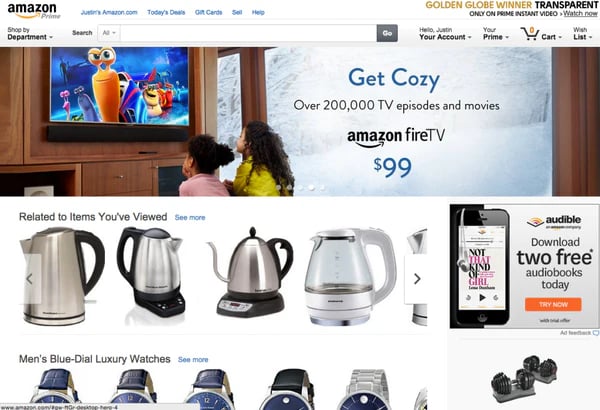
Photo source: Shopify
Amazon crafts personalized homepages for its customers, drawing insights from their historical shopping behaviors, wish lists, and shopping carts. This anticipatory strategy simplifies the process of locating desired items and uncovering new product recommendations, which enhances the overall shopping and customer experience.
Image source: Commercetools
Retailers can elevate customer engagement by embracing personalized experiences, a cornerstone of modern retail strategy. By tailoring interactions to individual preferences and needs, retailers can forge stronger connections, fostering loyalty and brand advocacy. Nordstrom serves as a prime illustration of this approach, exemplifying how personalization is key to customer care and streamlined purchasing. By integrating 3D foot-scanning sizer technology, Nordstrom empowers employees to cater to unique fit requirements, creating an experience that not only ensures comfort but also showcases genuine care for customers' needs. Such personalized efforts enhance customer satisfaction, making them feel valued and understood, ultimately driving lasting relationships and repeat business.
The seamless integration of digital and physical realms in the retail landscape is becoming increasingly important. Customers expect a unified experience that allows them to effortlessly navigate between online and in-store interactions.
Image source: Commercetools
Envision a scenario where your customers initiate a transaction through the app and seamlessly conclude it in-store. Alternatively, picture them effortlessly checking online or app-based inventory for a product and then conveniently reserving the item in-store for later pickup creating a true omnichannel retail experience.
“To win the loyalty of their consumers means optimizing the basics free-returns, priority pick-ups, seamless customer experiences, etc. In the end, the retailers that foster loyalty will be the ones who offer better personalization, transparent communication, and a digital experience that goes above and beyond.”
- Buyvoets in Retail Dive
This integration is evident in technologies that enable customers to readily access pricing promotions and discounts across channels, such as through mobile apps and QR codes. Mobile apps within physical stores provide a unique avenue to interact with customers on a personalized scale, providing tailored suggestions and exclusive offers. Mobile apps also empower retailers to gain insights into customer preferences and behavior, which can be used for future marketing efforts.
Image source: Canva
Moreover, the convenience of streamlined in-store pick-up services and enticing rewards programs is redefining the customer journey, ensuring that both digital and physical touchpoints seamlessly complement each other, enhancing overall satisfaction and engagement.
Empowering associates with seamless access to data through user-friendly digital tools is imperative for optimizing customer interactions. By utilizing their tablets or mobile phones, associates can effortlessly tap into a CRM platform, gaining access to comprehensive customer profiles brimming with valuable insights. These insights encompass a wealth of information, including past purchases, preferences, demographic details, customer satisfaction scores (CSAT), net promoter scores (NPS), and much more. This technology-enabled approach equips associates to provide personalized and informed assistance, fostering meaningful connections and elevating the overall retail customer experience.
A strategic emphasis on improving customer loyalty programs with enhanced usability lies at the heart of customer-centric initiatives. This entails refining the accessibility and simplicity of these programs, ensuring that customers can effortlessly engage with and reap the benefits. The integration and consolidation of various customer reward programs is also an important aspect of customer-centric initiatives. This integration is underscored by advanced data aggregation, comprehensive dashboards, and KPI reporting mechanisms. This holistic approach not only facilitates a seamless experience for customers but also equips businesses with data-driven insights to continually optimize their loyalty offerings for even greater customer retention.
An illustration of a customer loyalty program that streamlines the accumulation and redemption of rewards, while also simplifying the return process, is the customer loyalty accelerator.
Engaging younger audiences holds significant allure for retailers due to their potential for long-term brand loyalty and market growth. Younger consumers, often early adopters of new products and technologies, can serve as brand advocates, influencing peers and family members. Retailers can strategically integrate blockchain technology to engage younger audiences and enhance customer experiences. The following are ways retailers can integrate blockchain technology into customer experiences:
Social responsibility:Implementing blockchain for charitable activities or initiatives, with transparent donation tracking, appeals to younger consumers who value social responsibility.
Incorporating blockchain technology into your supply chain marks a transformative step towards creating a more efficient and scalable supply chain. The transparency provided by blockchain empowers stakeholders with real-time visibility into every step of the supply chain, promoting accountability and ethical practices.
A Neilsen report highlights that 77% of consumers would discontinue their brand purchases if they perceive the brand to be engaged in greenwashing. This statistic underscores the paramount significance of supply chain transparency.
Blockchain technology significantly enhances supply chain efficiency by creating a secure and transparent network for real-time data sharing among stakeholders. Its decentralized nature eliminates intermediaries and channel silos reducing delays and lowering operational costs and improving order tracking. This streamlining of processes ensures faster and more accurate transactions, boosting overall retail supply chain efficiency.
Autonomous vehicles are poised to revolutionize retail supply chain logistics by offering efficient and precise transportation. The integration of blockchain technology can further elevate this transformation. By using blockchain, the entire journey of goods transported by autonomous vehicles can be securely tracked, verified, and audited in real-time, ensuring transparency, accountability, and the safeguarding of goods throughout the supply chain journey.
Blockchain technology bolsters supply chain security by providing an unalterable record of product origins, manufacturing processes, and distribution. This transparency minimizes the risk of counterfeit goods infiltrating the market. Additionally, blockchain's encrypted and decentralized structure enhances data protection, safeguarding sensitive information and ensuring the authenticity of products throughout the supply chain.
Image source: Statista
Blockchain technology can be used within supply chains to synchronize orders seamlessly across multiple platforms through API-based integrations. By employing a decentralized ledger, retailers can access real-time updates and ensure consistent order information across various interfaces. The same concept can be applied to smart tracking of inventory across multiple platforms. This eliminates discrepancies, enhances operational efficiency, and fosters a harmonized supply chain ecosystem; thus ensuring correct expected delivery dates and an enhanced customer experience.
Image source: Getty Images
Leveraging blockchain technology offers a pathway to elevate delivery times within retail supply chains. By fostering enhanced communication and data exchange among key players, retailers can effectively track the journey of goods, ensuring transparency and accountability. This strategic integration aligns with the goal of competing against fast-fashion giants and Amazon, enabling the implementation of same-day shipping and 2-day delivery, coupled with streamlined return processes, for a robust and competitive customer experience.
Blockchain technology has the potential to revolutionize retail supply chains by providing scalability and facilitating globalization. Through its decentralized structure, blockchain enables seamless integration of new participants and transactions without compromising system performance. This agility fosters global expansion, allowing retailers to efficiently manage and monitor supply chain operations across diverse regions, ensuring consistency and efficiency on a global scale.
Adopting a fast code approach to digital reinvention in the retail supply chain can be empowered by blockchain technology. Through its decentralized and transparent nature, blockchain accelerates the development and deployment of innovative solutions, streamlining processes and enhancing efficiency. This Agile integration of blockchain can drive rapid digital transformation, enabling retailers to swiftly adapt, optimize operations, and stay competitive in the ever-evolving retail landscape.
Conclusion:
In summation, this trends report illuminates the dynamic landscape of retail, marked by the convergence of digital and physical realms, the transformative potential of blockchain, and the power of personalized experiences. These trends redefine customer engagement and operational efficiency, serving as strategic imperatives for retailers aiming to excel in today's market. To harness the benefits of these trends and tailor them to your unique business needs, we invite you to request a retail consultation with our experts. Let us help you navigate the future of retail and drive your success forward.
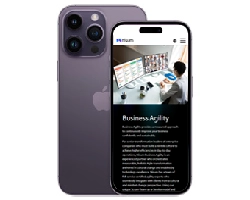
NEW! Going Fast!
Currently in 15 Carts
Available in 9 Styles
Price: Priceless
Shop Agility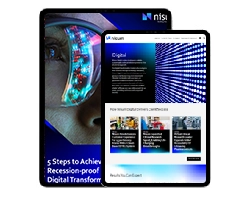
NEW! Going Fast!
Currently in 20 Carts
Available in 13 Styles
Price: Priceless
Shop Digital
NEW! Going Fast!
Currently in 18 Carts
Available in 12 Styles
Price: Priceless
Shop Data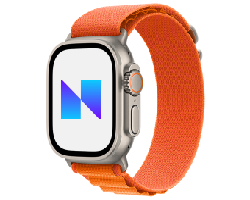
NEW! Going Fast!
Currently in 26 Carts
Available in 5 Styles
Price: Priceless
Shop BlockchainOur team has pioneered technology innovation in the retail sector for over 20 years. Partnering with the world's most innovative retail brands to build custom digital solutions to support expansion and revenue growth.


















































Let’s discuss how a partnership with Nisum can scale, expand, and grow your revenue!